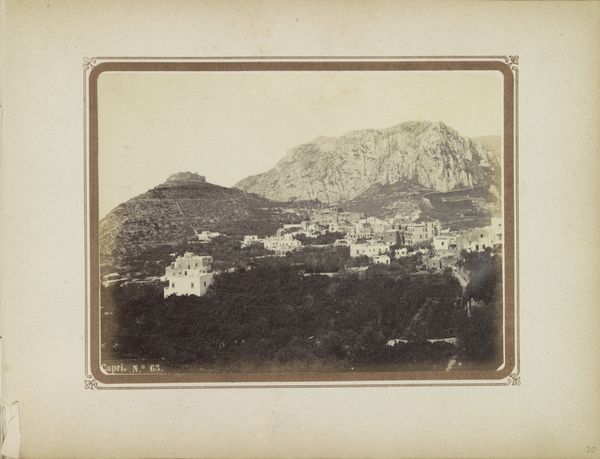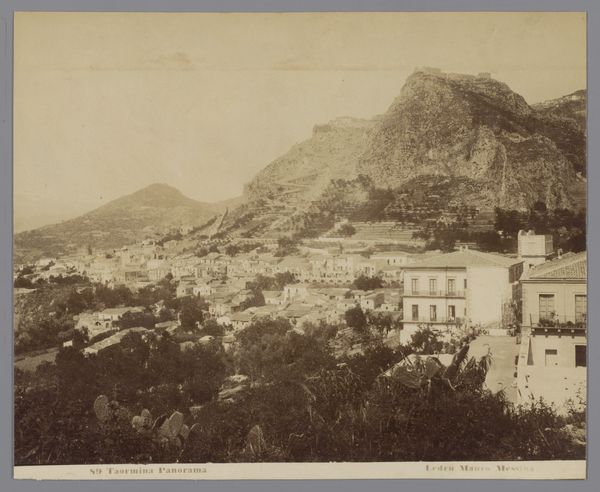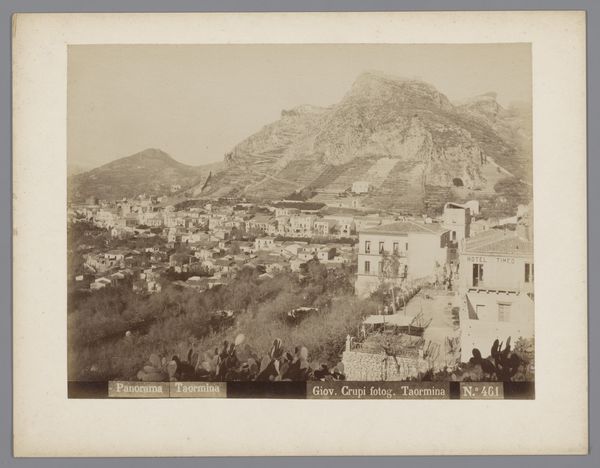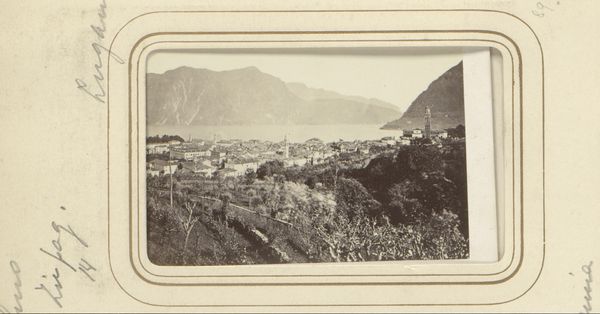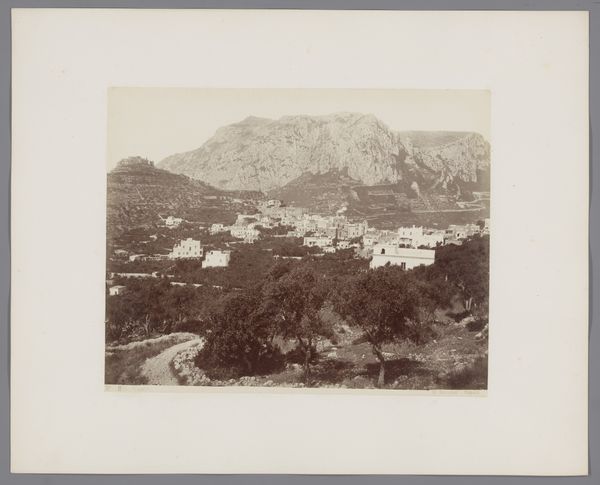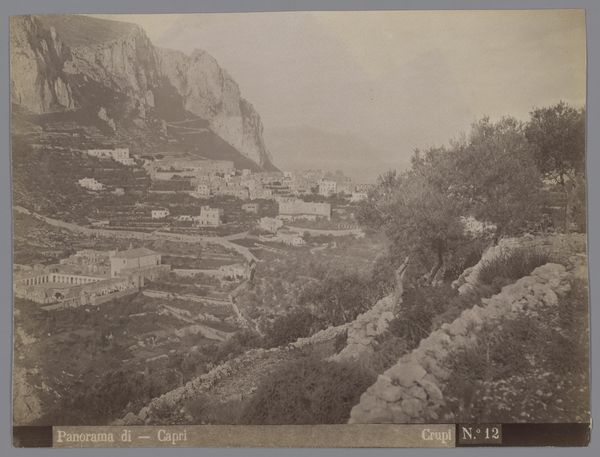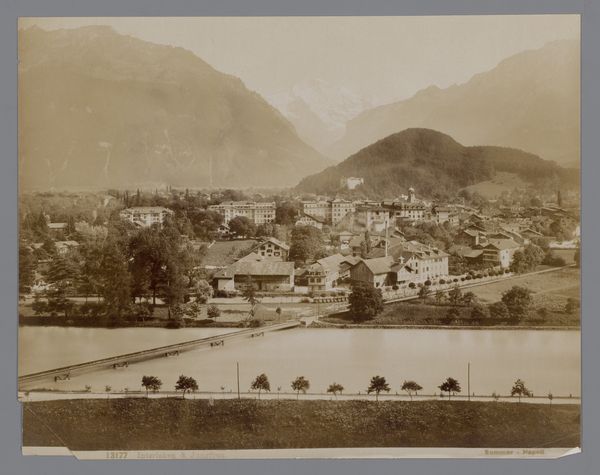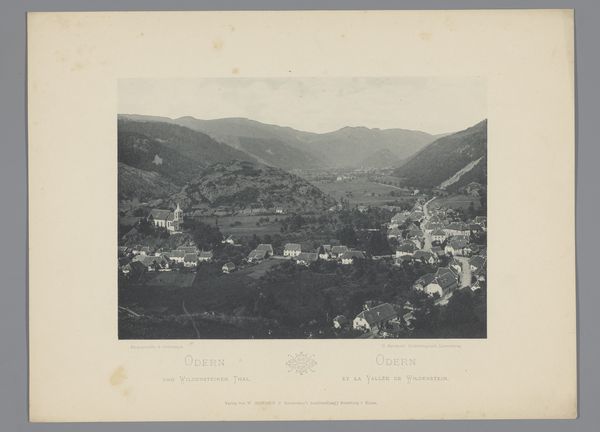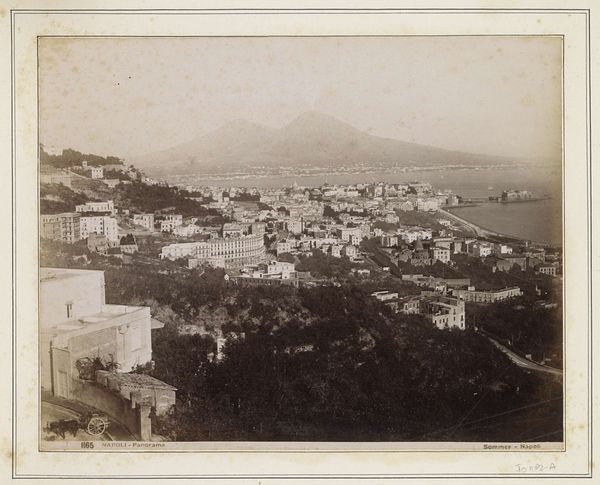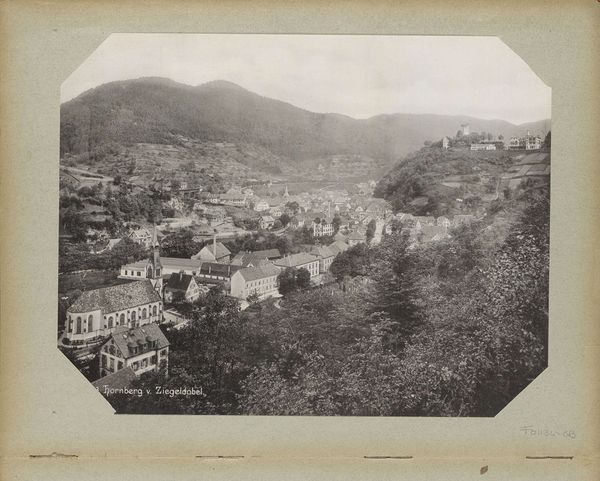
Dimensions: height 194 mm, width 244 mm, height 239 mm, width 277 mm
Copyright: Rijks Museum: Open Domain
Curator: Roberto Rive’s "View of the City of Capri" dates from between 1860 and 1889. We’re fortunate to have this particular photograph housed here at the Rijksmuseum. Editor: It feels very still, almost frozen. The sepia tones lend it a timeless quality, though there’s a slightly unsettling stillness to the composition. I am curious what sort of chemicals and process Rive employed, given its muted hues. Curator: It’s a remarkable example of photography's burgeoning role in documenting and shaping perceptions of landscape and culture. Travel became democratized, yet controlled and mediated by those producing the visual language of these locales. Photography offered "proof" of place. Editor: I'm immediately drawn to the figures at the base – seemingly captured working or carrying materials. There’s a visible social divide: the labor and the working conditions juxtaposed against the sublime beauty that's supposed to overwhelm us. What do we know about the photographer’s practice? Did he make this print himself? Curator: Rive capitalized on the Grand Tour phenomenon, catering to tourists eager to possess a memento of their travels. His studio likely employed many hands to produce these photographs. The reality of the people is ever-present yet made somehow... picturesque? Editor: Picturesque, yes, commodified labor presented for consumption. We are looking at a representation of Capri shaped as much by social conditions of its making, as the scene it presents. How did his work get distributed – where and how did people access these images? Curator: Think of albums compiled by wealthy travelers to signal their cultural sophistication. Rive ensured his photographs were available at popular tourist destinations, embedding himself within the existing infrastructure of travel and leisure. His choices in lighting, composition, viewpoint served a larger system of constructing that sophisticated viewpoint. Editor: So it’s less about capturing Capri "as it is" and more about fitting Capri into pre-existing ideals and networks of exchange? And also showing the human part of that exchange? Curator: Precisely! It speaks volumes about how photography, even in its nascent stages, was interwoven with socio-economic and political currents. It wasn't just capturing reality; it was constructing it, really. Editor: All the labor to produce the photographic image that creates, romanticizes, and sells this very vision… fascinating how much the image asks us to reflect.
Comments
No comments
Be the first to comment and join the conversation on the ultimate creative platform.
